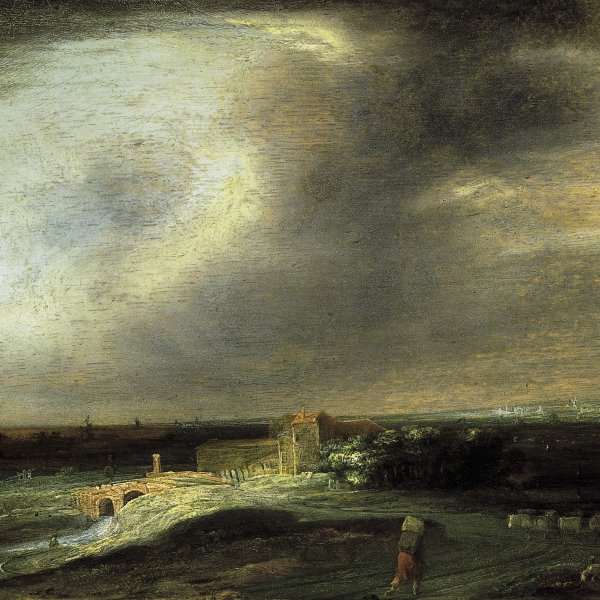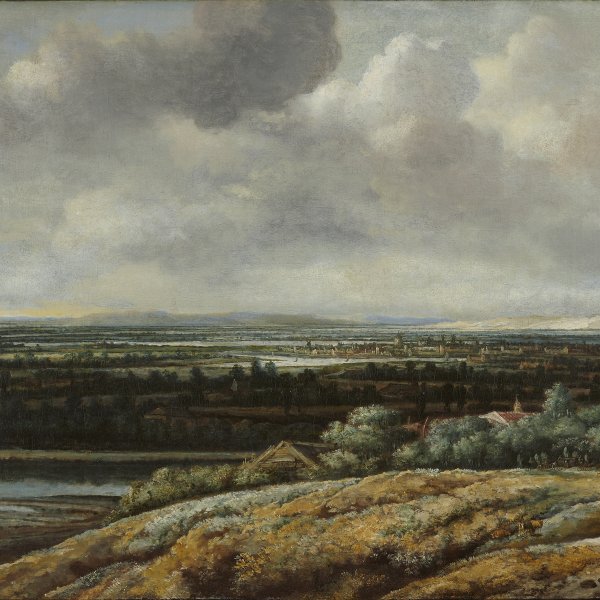Philips Koninck
Amsterdam, 1619 -1688
This Dutch painter, born in Amsterdam on 5 November 1619, specialised in landscapes, portraits, genre scenes and history paintings. Koninck’s father was a silversmith and one of his brothers a painter and it is known that he trained within the family circle, receiving his first lessons in painting from his brother Jacob in Rotterdam around 1637. Koninck’s earliest works have been dated to around 1639 and reveal an interest in portraiture. In 1640 he married Cornelia Furnerius, sister of the painter Abraham Furnerius, whose drawings are closely comparable to those of Koninck. According to the Dutch writer on art Arnold Houbraken, Koninck completed his training in Rembrandt’s studio in Amsterdam. It is evident that in the 1640s Koninck was influenced by Rembrandt with regard to colour, line and use of light, while the style of Hercules Segers is also to be detected in his work. Over the following decade Koninck evolved his own, distinctive manner and specialised in panoramic views in which he depicted sweeping areas of landscape from a high viewpoint. During these years he was active on the art market and in 1647 married again, to Margaretha van Rijn.
Like many other Dutch painters, Koninck had a second profession and was the owner of a prosperous shipping enterprise, sailing between Amsterdam and Rotterdam, an activity that brought him healthy profits. It seems likely that as a result of this activity he abandoned painting and his last works probably date from no later than 1670. Koninck’s late landscapes are more idealised and many of them include elegant, pastoral figures. His major contribution to the genre was the panoramic view inspired by Gelderland. Koninck was highly regarded during his lifetime and writers such as Joost van Vondel and Jan de Vos devoted texts to him, albeit praising his activities as a portraitist rather than a landscape painter. Koninck died in Amsterdam in 1688.
Like many other Dutch painters, Koninck had a second profession and was the owner of a prosperous shipping enterprise, sailing between Amsterdam and Rotterdam, an activity that brought him healthy profits. It seems likely that as a result of this activity he abandoned painting and his last works probably date from no later than 1670. Koninck’s late landscapes are more idealised and many of them include elegant, pastoral figures. His major contribution to the genre was the panoramic view inspired by Gelderland. Koninck was highly regarded during his lifetime and writers such as Joost van Vondel and Jan de Vos devoted texts to him, albeit praising his activities as a portraitist rather than a landscape painter. Koninck died in Amsterdam in 1688.






